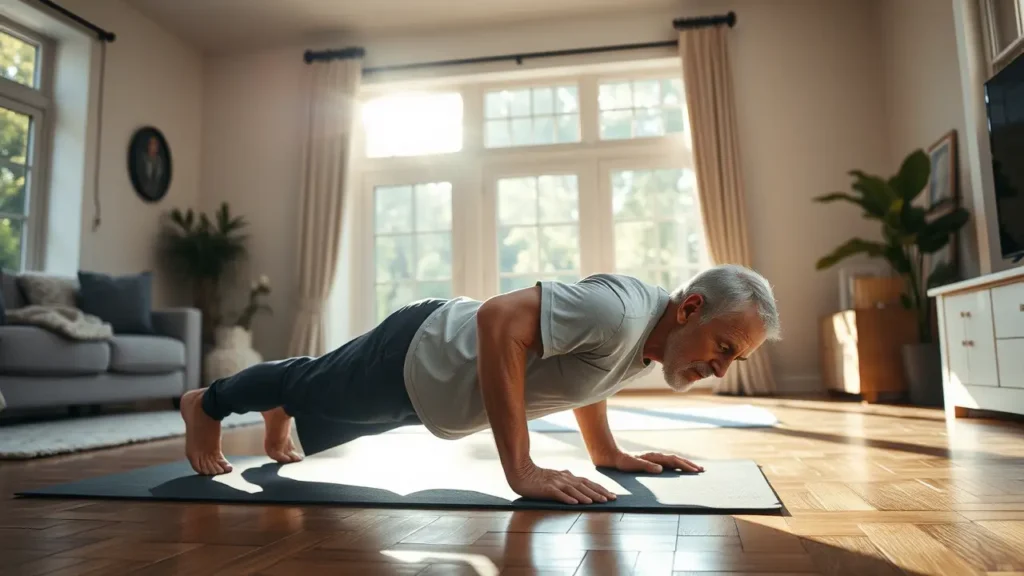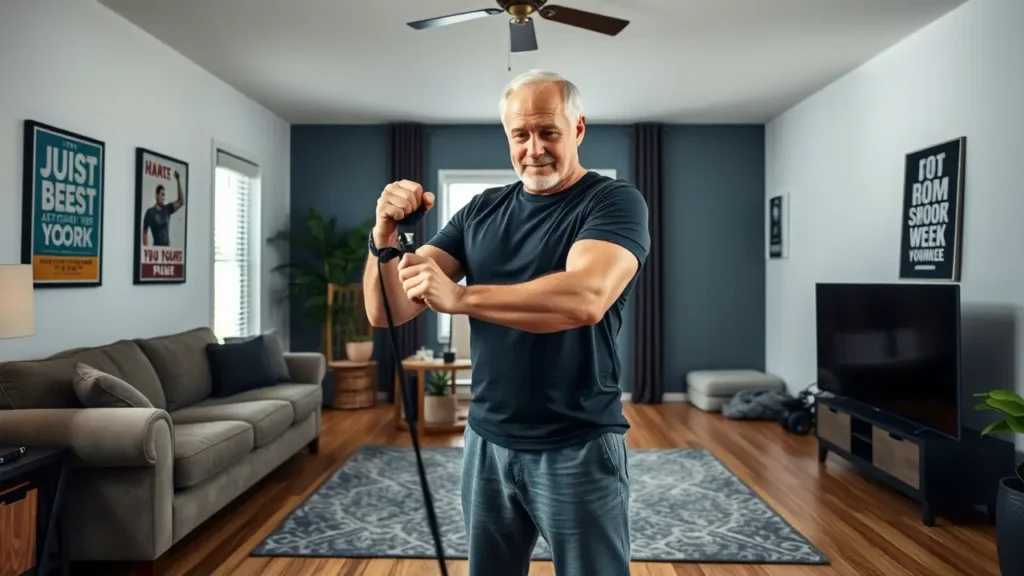As we age, maintaining an active lifestyle becomes increasingly important for both physical and mental well-being. For men in their early 50s and beyond, staying physically active indoors can be a rewarding way to keep the body strong and the mind sharp. Whether you’re dealing with inclement weather, recovering from an injury, or simply looking to mix up your routine, there are countless creative ways to stay active without stepping outside. In this article, we’ll explore engaging activities, exercises, and strategies that cater specifically to older men who want to prioritize their health while enjoying the comfort of their homes.
Why Staying Active Indoors Matters
Staying physically active is not just about maintaining a healthy weight; it’s also crucial for cardiovascular health, joint flexibility, muscle strength, and mental clarity. As we grow older, our bodies naturally lose muscle mass and bone density, making regular exercise even more essential. Engaging in indoor activities ensures that you’re consistently moving, no matter the external conditions.
“Exercise is medicine for the body, especially as we age. It helps combat chronic diseases, boosts mood, and enhances overall quality of life.” – Dr. Michael Johnson, Fitness Expert
For men in their early 50s, finding enjoyable ways to stay active indoors can make all the difference in sustaining long-term habits. The key is to focus on activities that align with your interests, abilities, and goals.

Low-Impact Exercises Perfect for Indoors
If you’re new to indoor workouts or prefer gentler options, low-impact exercises are an excellent starting point. These routines minimize stress on joints while still delivering significant benefits. Here are some ideas:
Bodyweight Workouts
Bodyweight exercises require no equipment and can be done anywhere in your home. They target multiple muscle groups and improve balance and coordination. Consider incorporating the following into your daily routine:
- Push-ups (modified versions are available if needed)
- Squats
- Lunges
- Planks
- Wall sits
These exercises build core strength and enhance endurance over time.
Yoga and Stretching Routines
Yoga offers numerous benefits, including increased flexibility, better posture, and reduced stress levels. A man in his early 50s practicing yoga might begin with basic poses like downward dog, tree pose, or warrior II. Over time, he can progress to more challenging sequences. Additionally, stretching routines help alleviate stiffness and promote relaxation.
Resistance Band Training
Resistance bands are affordable, portable, and highly effective tools for building strength. By adding resistance to movements like bicep curls, leg presses, and rows, you can simulate traditional gym exercises without bulky equipment.
Fun Activities That Double as Exercise
Who says working out has to feel like work? Turning physical activity into something enjoyable can make it easier to stick with your fitness goals. Below are some fun indoor activities tailored to men in their early 50s:
Dancing Like Nobody’s Watching
Dancing isn’t just for parties—it’s a fantastic full-body workout! Crank up your favorite tunes and let loose. Whether you prefer classic rock, jazz, or modern hits, dancing gets your heart pumping and lifts your spirits. You don’t need fancy moves; simply grooving to the rhythm counts as exercise.
Virtual Sports Simulations
Thanks to advancements in technology, you can now play virtual sports right from your living room. Games like Wii Sports or VR tennis allow you to mimic real-life athletic movements while having fun. This interactive approach keeps things exciting and competitive.
Household Chores as Mini-Workouts
Believe it or not, household chores can burn calories and tone muscles. Vacuuming, mopping, gardening indoors, or rearranging furniture provides a surprising amount of physical exertion. Plus, there’s the added bonus of accomplishing tasks around the house!
Structured Indoor Workouts for Men Over 50
For those seeking structure, designing a weekly workout plan can provide consistency and accountability. Here’s a sample schedule combining cardio, strength training, and flexibility exercises:
| Day | Activity Type | Examples |
|---|---|---|
| Monday | Cardio | Jump rope, brisk walking in place |
| Tuesday | Strength Training | Dumbbell exercises, push-ups |
| Wednesday | Flexibility & Balance | Yoga session, static stretches |
| Thursday | Rest or Light Activity | Gentle stretching, meditation |
| Friday | Cardio + Core | High knees, planks |
| Saturday | Full-Body Workout | Circuit training |
| Sunday | Active Recovery | Leisurely walk, light yoga |
This balanced routine ensures variety and prevents boredom, keeping you motivated throughout the week.

Incorporating Technology for Accountability
Modern technology makes it easier than ever to track progress and stay accountable. Wearable devices like Fitbit or Apple Watch monitor steps, heart rate, and calories burned. Mobile apps such as MyFitnessPal or Strava offer guided workouts and community support. Leveraging these tools can enhance your indoor fitness journey by providing data-driven insights and encouragement.
Mental Health Benefits of Staying Active Indoors
Physical activity isn’t just about physical health—it also plays a vital role in mental well-being. Regular movement releases endorphins, which elevate mood and reduce feelings of anxiety or depression. For men in their early 50s, staying active indoors fosters a sense of accomplishment and purpose. Activities like meditation paired with light stretching create a holistic approach to self-care.
“An active lifestyle contributes to cognitive function and emotional resilience. It’s never too late to start prioritizing your health.” – Sarah Lee, Wellness Coach
FAQs About Staying Active Indoors
Q: How much exercise should I aim for each day? A: The Centers for Disease Control and Prevention (CDC) recommends at least 150 minutes of moderate-intensity aerobic activity per week, along with two days of muscle-strengthening exercises.
Q: Can I lose weight by exercising indoors? A: Yes! Combining regular exercise with a balanced diet can lead to weight loss. Focus on creating a calorie deficit through portion control and increased physical activity.
Q: What if I have mobility issues? A: Adapt exercises to suit your needs. Seated workouts, water aerobics in a pool at home, or chair yoga are great alternatives for individuals with limited mobility.
Final Thoughts
Staying physically active indoors doesn’t have to be monotonous or intimidating. With a bit of creativity and planning, men in their early 50s can discover fulfilling ways to move their bodies and improve their overall health. From structured workouts to playful activities, the possibilities are endless. Remember, consistency is key—find what works best for you and embrace the process.
By integrating these tips into your lifestyle, you’ll not only maintain your physical vitality but also cultivate a positive mindset that radiates outward. So lace up those sneakers, roll out the yoga mat, or crank up the music—it’s time to get moving!



